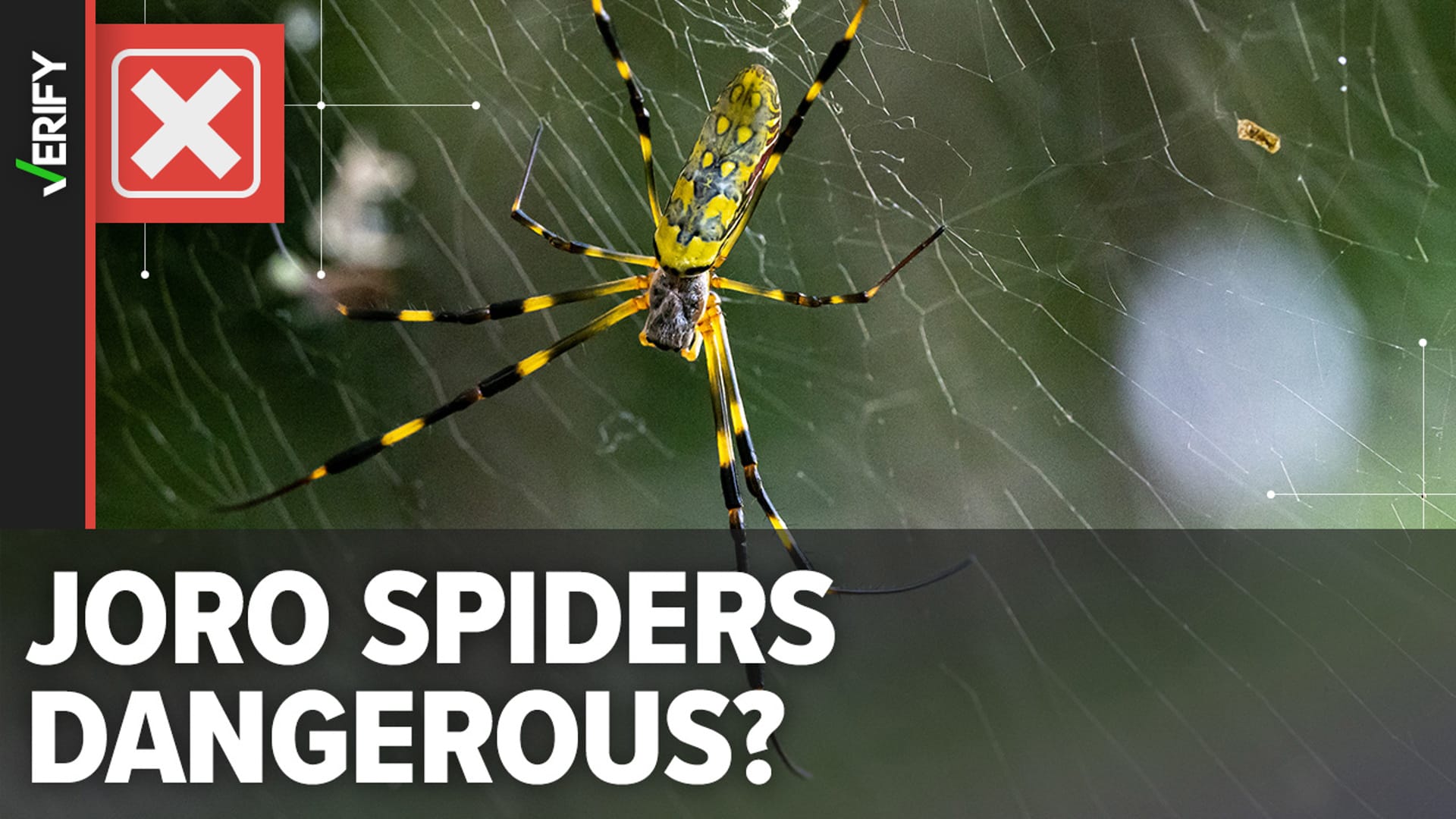Unveiling the Truth About Joro Spiders
The Joro spider, a large, colorful arachnid, has been making headlines lately, sparking curiosity and concern. But how much of what you’ve heard is true? Let’s debunk some myths and uncover the fascinating facts about these intriguing creatures.
No Wings, No Problem: The Art of Ballooning
Joro spiders, despite their impressive ability to travel long distances, don’t actually fly. They lack wings, but they have a clever trick up their eight sleeves – ballooning.
Similar to a dandelion seed floating on a breeze, baby Joro spiders release silky threads that act as tiny parachutes. These threads catch the wind, carrying the spiders to new locations. It’s an ingenious method for these little adventurers to disperse and find their own space.
Venom: Fact vs. Fiction
Yes, Joro spiders are venomous, but before you panic, it’s important to understand that their venom is designed for their prey – insects. Their venom poses very little threat to humans. In fact, their fangs are so small and weak that they can rarely pierce our skin.
Even if, by some unlikely chance, you do get bitten by a Joro spider, it’s unlikely to be serious. Most likely, you’d experience some mild discomfort, similar to a bee sting.
New Neighbors, New Benefits?
The arrival of the Joro spider in the U.S. has sparked debate. While some are concerned, emerging research suggests these spiders might actually benefit our ecosystem.
Joro spiders have a voracious appetite for nuisance insects like mosquitoes and stink bugs, which can damage gardens and disrupt outdoor spaces. Having these spiders around could help control these pesky populations.
Spreading Out: The Joro Spider’s Journey
Originally from East Asia, Joro spiders have established themselves in the southeastern U.S. and are venturing further north – as far as Pennsylvania and even Massachusetts! This rapid expansion, facilitated by their ballooning abilities, has attracted the attention of scientists. Researchers are eager to learn more about how these spiders are adapting to new environments and their potential impact on existing species.
Separating Hype from Reality
The Joro spider’s arrival has been met with some media sensationalism. Headlines often exaggerate their presence, painting a picture of an impending spider invasion. It’s crucial to remember that Joro spiders are not aggressive and would much rather avoid humans than engage with them. Instead of fearing them, let’s appreciate these fascinating creatures and recognize their important role in our ecosystem.
You Can Be a Scientist, Too!
Citizen science initiatives like Joro Watch invite the public to help track the spread of Joro spiders and gather valuable data. By simply reporting your sightings, you can help scientists better understand these spiders, their behavior, and their potential impact.
Understanding the Venom of a Joro Spider
Joro spiders, those large, web-spinning arachnids making their way across the United States, have sparked curiosity and concern. One common question is, “How venomous is a Joro spider?”.
Joro Spider Venom: Minimal Risk to Humans
The good news is that you probably don’t need to worry too much about Joro spider venom, especially if you’re a human. While they are venomous, their venom is designed to subdue their prey, which consists mainly of small insects.
Their venom is far less potent than a bee sting, and their fangs are generally too small and weak to effectively penetrate human skin. Even if a Joro spider does manage to bite you – which is unlikely given their shy and non-aggressive nature – you’ll probably experience some localized pain and redness, similar to a bee sting, but likely less intense.
What to Do if Bitten
If you do experience a Joro spider bite, washing the area with soap and water is usually sufficient. You can apply a cold compress to reduce swelling and over-the-counter pain relievers if needed. However, if you know you have allergies to insect bites or experience any unusual symptoms, it’s always best to consult a medical professional.
Joro Spiders and Ballooning: Can Spiders Really Fly?
While the idea of flying spiders might sound like something out of a horror movie, the reality is a bit less terrifying and a lot more fascinating. Joro spiders, like some other spider species, can’t fly in the traditional sense, but they have a remarkable way of traveling long distances through the air – a process called ballooning.
How Ballooning Works
Ballooning is a dispersal method primarily used by young spiders, or spiderlings. They climb to an elevated point, like a blade of grass or the top of a fence, and release strands of silk from their spinnerets into the air. These silk threads, incredibly light and strong, catch the wind and act as miniature parachutes, lifting the spiderling into the air.
This method of air travel allows Joro spiders to cover impressive distances, sometimes hundreds of miles, explaining their rapid spread across the southeastern United States and beyond.
Sensationalism vs. Science
Media reports often sensationalize the ballooning behavior of Joro spiders, using terms like “flying spiders” or “airborne invasion.” While these headlines might grab attention, they can also create misconceptions. It’s essential to understand that ballooning is a natural and widespread behavior among many spider species, not some unusual or threatening phenomenon.
Beyond the Joro: Unveiling China’s Truly Deadly Spiders
While the Joro spider has captured attention with its size and web-building capabilities, it’s not the spider to be most wary of in China. The title of “deadliest spider in China” likely belongs to the Chinese Bird-dropping Spider (Atrax robustus).
The Chinese Bird-Dropping Spider: A Real Threat
This spider’s venom is potent, containing neurotoxins that can cause serious health problems, including paralysis and respiratory issues. Fortunately, bites from these spiders are relatively rare as they tend to inhabit rural areas and are not particularly aggressive.
Exploring the Diversity of Chinese Spiders
China, with its diverse ecosystems, is home to a variety of spider species. While the Chinese Bird-dropping Spider stands out as a potentially dangerous species, it’s crucial to remember that most spiders are not aggressive and play vital roles in their ecosystems.
Tips for Coexisting with Spiders
Understanding the habits and habitats of different spider species can help minimize encounters and reduce the risk of bites. Here are a few tips:
- Keep outdoor areas tidy: Clear away clutter and debris where spiders might build webs.
- Shake out clothing and shoes: Spiders might seek shelter in dark, undisturbed places.
- Be cautious in basements and attics: These areas are more likely to harbor spiders.
By learning more about spiders, we can appreciate their important role in the natural world and dispel myths that often surround them. If you’re interested in learning more about spiders and contributing to scientific research, consider participating in citizen science projects like Joro Watch.
Do you want to know more about the renowned conductor, Francis Folger Franklin? There’s a whole page about his life and works if you’re interested in getting more information. Meanwhile, if you are interested in discovering more about the rare orchid, Fona Herzogae, just click the link.

















1 thought on “Joro Spider Flights: Separating Fact from Fiction”
Comments are closed.